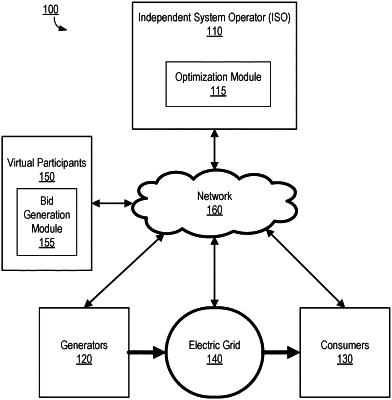| CPC G05B 13/048 (2013.01) [G06N 20/00 (2019.01); G06Q 50/06 (2013.01); H02J 3/008 (2013.01); H02J 3/003 (2020.01); H02J 2203/20 (2020.01)] | 20 Claims |

|
1. A method for generating a control input to improve efficiency of an electrical power grid, the method comprising:
obtaining a plurality of models for modeling historical data associated with the operation of the electrical power grid, wherein each model comprises a neural network and is trained to fit the neural network to historical data that includes one or more input samples and a metric describing operation of the electrical power grid;
generating, based on the plurality of models, a plurality of input probability distributions representing predicted inputs to a complex system optimization executed by an Independent System Operator (ISO) for scheduling power production and transmission across the electrical power grid according to day-ahead and real-time schedules;
simulating execution of the complex system optimization for each of the multiple input probability distributions to generate respective output probability distributions of predicted deltas between the day-ahead and real-time schedules as predicted to be determined by the ISO;
determining a control input for submission to the ISO representing nodal corrections to supply and demand that maximize scheduling efficiency based on the probability distributions of the predicted deltas; and
submitting the control input to the optimization system of the ISO, wherein the ISO controls production schedules of generators in the electric grid based in part on the control input.
|